# 1 – Learning New Regulations and Compliance# 2 – Developing Expertise# 3 – Getting Ahead of the Competition Lead pipe replacement is an issue. Between 1900 and 1950, cities in all 50 US states installed over 9 million lead water service lines which, in many cases, were mandated for benefits including their longevity. With Read more
Whats Next
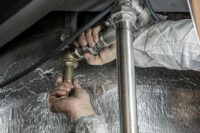
Table of Contents
Lead pipe replacement is an issue. Between 1900 and 1950, cities in all 50 US states installed over 9 million lead water service lines which, in many cases, were mandated for benefits including their longevity. With most of these pipes lasting between 75 and 100 years, many are still in use today, despite the fact that we’re now fully aware of how risky high water lead levels can be.
At the end of 2024, Joe Biden proposed the ‘Lead Replacement scheme’, which aims to oversee the complete replacement of American lead piping systems in the next ten years. While there has been some concern about the viability of the ten-year timeline, states, cities, and water utilities all agree that plumbing infrastructure needs to change. The question is, what does Biden’s proposal mean for the plumbing professionals?
Ultimately, replacements of dangerous lead piping are good news, making jobs safer and ensuring better customer-facing results. But it would be naive to assume that a total infrastructure overhaul won’t bring any industry disruption. Luckily, plumbers can easily adapt to any upcoming changes with the following vital tips.
# 1 – Learning New Regulations and Compliance
Biden’s proposal shines a light on an industry problem that’s been causing significant health problems for years. We already know that high levels of lead exposure can lead to everything from developmental problems to cardiac arrest, and it’s certainly contributed to the health debt outlined by Alex Kleyner in this article. As water utilities take a step towards healthier processes, it’s more important than ever for plumbing professionals to stay on top of new regulations and compliance requirements for ongoing client safeguarding.
To handle lead pipe replacements, plumbing professionals particularly need to seek the correct accreditation, as well as specific pipe replacement certifications.
# 2 – Developing Expertise
While the extent and speed required for this mass replacement task might seem overwhelming, the replacement of lead piping also opens the door to requirements for brand new plumbing expertise. This is true in terms of replacements themselves, which not every plumber will be authorized to carry out, but there are plenty of other learning opportunities waiting within this change.
For instance, plumbers who are experienced in identifying lead piping will inevitably see an increase in business over the next decade. Equally, with most lead pipes being replaced by alternatives such as copper, iron, and steel, plumbers with experience in these materials will typically perform better.
# 3 – Getting Ahead of the Competition
Lead pipe replacements may bring new possibilities for industry business over the coming years, but they’ll also initiate a competitive rush to secure clients. As well as ensuring their accreditation and experience, plumbing professionals will need to find alternative ways to get ahead and come out on top in the new plumbing world, including offering competitive pricing, providing complete pipe replacement packages, and generally ensuring exemplary service.
The plumbing industry is on the cusp of a big change, but plumbing professionals can easily keep up with the tide if they simply bear these tips in mind.
Sign up for our FREE Newsletter, https://mechanical-hub.com/enewsletter/

Running a successful plumbing business requires more than just technical expertise; it involves a deep understanding of business operations, customer service, and industry best practices. Whether you’re a seasoned professional or just starting, adhering to best practices can enhance your business’s efficiency, reputation, and profitability. Here are essential best practices every plumbing business owner should Read more
Running a successful plumbing business requires more than just technical expertise; it involves a deep understanding of business operations, customer service, and industry best practices. Whether you’re a seasoned professional or just starting, adhering to best practices can enhance your business’s efficiency, reputation, and profitability. Here are essential best practices every plumbing business owner should know.
1. Stay Updated with Industry Standards and Regulations
The plumbing industry is governed by various standards and regulations to ensure safety and quality. It’s crucial to stay updated with these regulations, including local building codes, environmental regulations, and health and safety standards. Regularly review updates from organizations such as the American Society of Plumbing Engineers (ASPE) and the International Association of Plumbing and Mechanical Officials (IAPMO).
Practical Tips:
- Attend industry seminars and webinars.
- Subscribe to industry publications and newsletters.
- Join professional organizations and participate in their events.
2. Invest in Quality Tools and Equipment
Using high-quality tools and equipment is essential for performing plumbing tasks efficiently and effectively. Investing in reliable tools can prevent delays and reduce the likelihood of errors, leading to improved customer satisfaction and fewer callbacks.
Practical Tips:
- Research and invest in durable, high-performance tools.
- Regularly maintain and service your equipment to ensure longevity.
- Train your team on the proper use and care of tools and equipment.
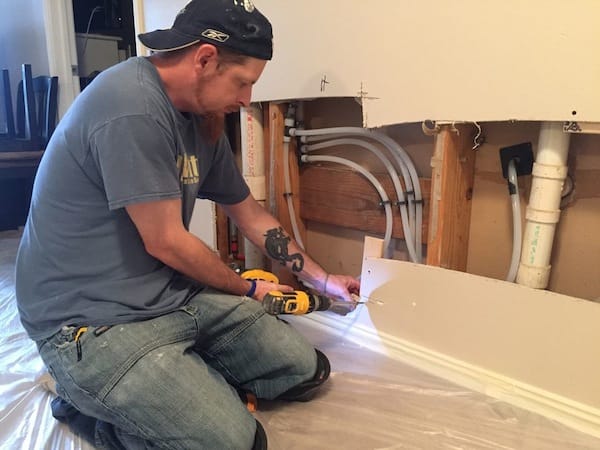
3. Implement Comprehensive Training Programs
Ongoing training is vital for keeping your team’s skills sharp and ensuring they are knowledgeable about the latest techniques and technologies in plumbing. A well-trained team can handle complex issues more effectively, which can set your business apart from competitors.
Practical Tips:
- Provide regular training sessions and workshops.
- Encourage certification and continuing education courses.
- Conduct hands-on training to reinforce theoretical knowledge.
4. Focus on Customer Service
Exceptional customer service is a cornerstone of a successful plumbing business. Building strong relationships with customers can lead to repeat business, positive reviews, and referrals.
Practical Tips:
- Train your staff to communicate effectively and professionally with customers.
- Implement a customer feedback system to gather insights and improve services.
- Be responsive and address customer concerns promptly.
5. Adopt Effective Marketing Strategies
Marketing is essential for attracting new customers and retaining existing ones. Utilize both traditional and digital marketing strategies to increase your business’s visibility and reach.
Practical Tips:
- Develop a user-friendly website with detailed information about your services.
- Utilize social media platforms to engage with your audience and showcase your work.
- Implement search engine optimization (SEO) strategies to improve your online presence.
- Don’t forget old-school methods like mugs with your logo on it.
6. Utilize Technology for Efficiency
Embracing technology can streamline your operations and improve efficiency. From scheduling and invoicing software to advanced diagnostic tools, technology can enhance various aspects of your business.
Practical Tips:
- Invest in plumbing software for scheduling, billing, and customer management.
- Use diagnostic tools and apps to quickly identify and resolve issues.
- Implement a digital inventory management system to keep track of tools and supplies.
7. Prioritize Safety
Safety is paramount in the plumbing industry. Implementing strict safety protocols can prevent accidents and injuries, protecting your employees and clients.
Practical Tips:
- Conduct regular safety training sessions and drills.
- Equip your team with personal protective equipment (PPE).
- Develop and enforce a comprehensive safety policy.
8. Maintain a Strong Online Presence
In today’s digital age, having a strong online presence is crucial for attracting and retaining customers. Your website and social media profiles should reflect your professionalism and expertise.
Practical Tips:
- Regularly update your website with new content, including blogs and customer testimonials.
- Engage with customers on social media by sharing tips, project highlights, and promotions.
- Monitor online reviews and respond to feedback promptly.
9. Offer Competitive Pricing
Competitive pricing can help you attract more customers without compromising on quality. Conduct market research to understand the pricing strategies of your competitors and adjust your rates accordingly.
Practical Tips:
- Regularly review and adjust your pricing based on market trends.
- Offer transparent pricing and detailed estimates to build trust with customers.
- Consider providing discounts or loyalty programs to encourage repeat business.
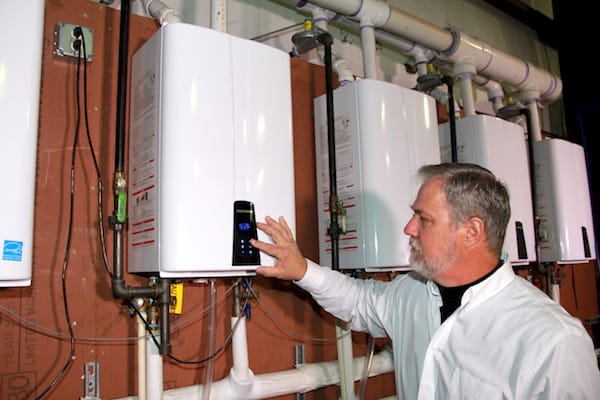
10. Build a Reliable Network of Suppliers
Having a reliable network of suppliers is essential for ensuring you have access to quality materials and equipment. Strong relationships with suppliers can also lead to better pricing and priority service.
Practical Tips:
- Research and select reputable suppliers with a track record of reliability.
- Negotiate contracts to secure favorable terms and pricing.
- Maintain good communication and promptly address any issues that arise.
11. Implement Efficient Scheduling and Dispatching
Efficient scheduling and dispatching can enhance your team’s productivity and ensure timely service delivery. Utilize scheduling software to optimize your workflow and reduce downtime.
Practical Tips:
- Use scheduling software to automate and optimize appointment bookings.
- Implement GPS tracking for your fleet to improve dispatching efficiency.
- Train your team to manage their time effectively and adhere to schedules.
12. Focus on Sustainability
Sustainability is becoming increasingly important in the plumbing industry. Implementing eco-friendly practices can attract environmentally conscious customers and reduce your environmental impact.
Practical Tips:
- Offer eco-friendly plumbing solutions, such as water-saving fixtures and energy-efficient systems.
- Educate customers on sustainable practices and products.
- Reduce waste and recycle materials whenever possible.
13. Monitor and Improve Business Performance
Regularly monitoring your business performance can help you identify areas for improvement and implement effective strategies. Use key performance indicators (KPIs) to measure your success and make data-driven decisions.
Practical Tips:
- Track KPIs such as customer satisfaction, job completion times, and revenue growth.
- Conduct regular performance reviews and adjust strategies as needed.
- Use customer feedback and industry benchmarks to set realistic goals.
14. Maintain Professionalism
Professionalism is crucial for building a positive reputation and earning the trust of your customers. Ensure that your team represents your business in a professional manner at all times.
Practical Tips:
- Establish a professional dress code and grooming standards.
- Train your team on proper etiquette and communication skills.
- Ensure that all interactions with customers are courteous and respectful.
15. Plan for Business Growth
Planning for growth is essential for the long-term success of your plumbing business. Develop a strategic plan that outlines your goals and the steps you’ll take to achieve them.
Practical Tips:
- Identify potential areas for expansion, such as new services or markets.
- Invest in marketing and branding to increase your visibility.
- Consider forming partnerships or acquiring other businesses to expand your reach.
16. Ensure Financial Management and Planning
Effective financial management is crucial for the sustainability and growth of your plumbing business. Proper budgeting, accounting, and financial planning can help you manage cash flow, reduce expenses, and make informed decisions.
Practical Tips:
- Create a Budget: Develop a detailed budget to track your income and expenses. This helps in forecasting future financial needs and avoiding overspending.
- Use Accounting Software: Invest in reliable accounting software to streamline financial tracking and reporting. This can also help identify areas where you can save money.
- Hire a Professional: Consider hiring an accountant or financial advisor to assist with complex financial matters and tax planning.
- Monitor Cash Flow: Regularly monitor your cash flow to ensure you have enough funds to cover operating expenses and invest in growth opportunities.
- Set Financial Goals: Establish short-term and long-term financial goals, and create a plan to achieve them. Regularly review and adjust your goals based on your business’s performance.
Effective financial management ensures that your business remains profitable and can withstand economic fluctuations. By keeping a close eye on your finances, you can make strategic decisions that support growth and sustainability.
Conclusion
Adhering to these best practices can help plumbing business owners enhance their operations, improve customer satisfaction, and achieve long-term success. By staying updated with industry standards, investing in quality tools and training, prioritizing customer service, and embracing technology, you can build a reputable and profitable plumbing business. Remember, the key to success lies in continuous improvement and adaptation to the ever-evolving industry landscape.
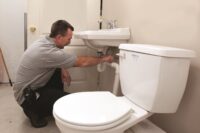
When you’re a professional plumber, making a mistake can cost your reputation, not to mention your customers’ homes, dearly, so it is important you do everything you can to avoid those common errors that can spell disaster. In order to do that, let’s look at some common mistakes plumbers make, so you can hopefully avoid Read more
When you’re a professional plumber, making a mistake can cost your reputation, not to mention your customers’ homes, dearly, so it is important you do everything you can to avoid those common errors that can spell disaster.
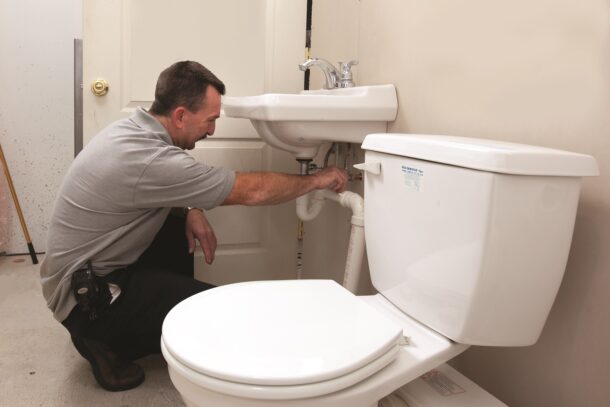
In order to do that, let’s look at some common mistakes plumbers make, so you can hopefully avoid them in your working life.
-
Ignoring the Almighty Pressure Washer
First off, let’s give a big shoutout to pressure washing equipment, which is, as you should know, not just for cleaning driveways or graffiti off walls. No, dear friends, it’s also a pipeline’s best buddy. When faced with the Herculean task of clearing out years of sludge and grime from sewer lines, the pressure washer steps in like a hero. So, don’t ignore this powerhouse tool. Embrace it, cherish it, and for heaven’s sake, use it—because nobody likes a comeback story starring last year’s grease.
-
Skipping the Double-Check
Here’s a scene: You finish a job, pack up, and give a confident nod to your work—only to get a call hours later about a leak. The culprit? A connection you forgot to tighten. Always double-check your work. The five minutes you save by rushing off to your next appointment can cost you hours of return work and buckets of reputation points.
-
Tool Mismanagement
Raise your hand if you’ve ever used a screwdriver as a chisel. It’s okay, this is a safe space. But let’s be real: using tools for purposes they weren’t intended for is like using a loaf of bread as a doorstop—it might work temporarily, but it’s not a great idea. Respect your tools, and they’ll respect you back (and maybe save you from a mid-job meltdown).
-
The ‘Eyeball It’ Method
Precision in measurements is not just a fancy concept—it’s a cornerstone of good plumbing. “Eyeballing” pipe cuts or fixture alignments can lead to jobs that look more like abstract art than professional work. Always use the right measuring tools because, unlike horseshoes and hand grenades, close enough just doesn’t cut it in plumbing.
-
Forgetting Customer Service Skills
Remember, folks, plumbing isn’t just about pipes; it’s about people. The gruff, silent type might work for movie cowboys, but in the plumbing world, communication is key. Don’t just fix and flee. Explain what went wrong, what you did to fix it, and how it can be prevented in the future. A little chat can turn a customer into a repeat customer.
-
Neglecting Continuing Education
Plumbing technology evolves faster than many of us realize. If you’re still relying on techniques you learned decades ago, you might be missing out on easier, more efficient methods that could save your back and your bottom line. Keep up with the times and invest in ongoing education. It’ll keep you sharp and possibly introduce you to new gadgets and gizmos in the industry.
-
Underestimating the Cleanup
Last but not least, leaving a work site looking like a crime scene is a big no-no. A clean work area not only shows professionalism but also prevents those pesky “you left a mess” calls. Plus, who doesn’t love the sight of a spotless space post-job? It’s almost as satisfying as popping bubble wrap.
Keep these tips in mind, and not only will your pipes be flowing smoothly, but so will your business.
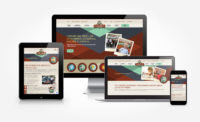
It’s really important to create the perfect website for your business, but what was perfect one year might not immediately be perfect the next year. Overall, running a business, especially a plumbing-oriented business, is the farthest thing from easy. Your days are packed between unclogging drains, fixing leaks, and installing new systems. With all that Read more
It’s really important to create the perfect website for your business, but what was perfect one year might not immediately be perfect the next year. Overall, running a business, especially a plumbing-oriented business, is the farthest thing from easy. Your days are packed between unclogging drains, fixing leaks, and installing new systems. With all that hustle, letting your business website fall by the wayside is easy.
But you have to keep in mind that your website is your digital storefront, and just like any physical storefront, it needs regular upkeep and occasional updates. But when exactly is the best time to refresh your website? Well, here are some of the telltale signs that your business website could use an upgrade.
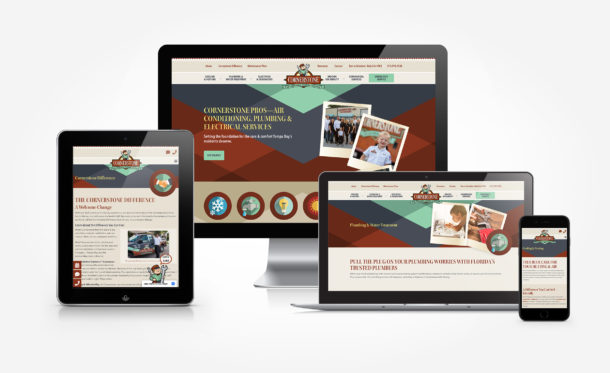
Your Website Looks Outdated
Needless to say, first impressions matter, especially online. If your website looks like it was designed in the early 2000s, it’s probably time for an update. Actually when it comes to any industry, landscaping, HVAC, you name it, it’s important to have an updated website. It can really help to look into HVAC web design, plumbing design, and basically any web design for the home services profession (ideally not a template).
Anyways, trends in web design change rapidly, and what looked modern five years ago might now seem ancient. Just think about it—would you trust a business with a rusty, old sign out front? The same principle applies to your website. An outdated design can give potential customers the impression that your services are behind the times, too.
It’s Not Mobile-Friendly
Nowadays, a huge chunk of web traffic comes from mobile devices. If your website isn’t optimized for smartphones and tablets, you’re missing out on a lot of potential business. Actually, this isn’t even SEO-friendly either; while yes technically this doesn’t penalize you, it does mean more clicks. Why is this important? Well, the mobile-friendly site adjusts seamlessly to different screen sizes, which ensures that visitors have a smooth experience whether they’re on a desktop, tablet, or phone.
If customers have to pinch and zoom to read your content or struggle to click tiny links, they’re likely to bounce off your site and head to a competitor’s. Google also favors mobile-friendly websites in search rankings, so an update could boost your visibility.
Slow Load Times
Needless to say, patience is not a virtue most web users possess. If your site takes more than a few seconds to load, you’re losing potential customers. Again, this isn’t SEO-friendly, and it can hurt your rankings! It’s so important to understand that people expect fast, responsive websites, and if yours is dragging its feet, they’ll quickly move on.
But that’s not all. You also have to keep in mind that there are various reasons why a site might be slow, from large image files to outdated code. Overall, a website update can address these issues, speeding up load times and keeping visitors engaged.
High Bounce Rates
So, do you look into your Google Analytics? If you notice that visitors are landing on your site but leaving almost immediately, this is a high bounce rate. It’s a clear indicator that something is off. Maybe your content isn’t engaging, or perhaps your site is difficult to navigate. Either way, a high bounce rate means that people aren’t finding what they’re looking for.
So, this is why you need to look into updating your website, overall, an updated design, better content, and improved navigation can all help keep visitors on your site longer, increasing the chances they’ll contact you for your services.
Poor Search Engine Rankings
Alright, so SEO was mentioned a lot, but it definitely needs to be mentioned again. So, you can technically have a great website but still not show up in results. Websites that don’t show up basically don’t even exist. You can’t expect to get a lot of customers online if your website’s SEO is bad; with all of that said, if your website isn’t ranking well, it might be due to outdated SEO practices. Google’s algorithms change frequently, and techniques that worked a few years ago might not cut it today. Updating your site with current SEO best practices can improve your search rankings, making it easier for potential customers to find you.
Your Content Is Stale
Hands down, it’s so important to understand that content is king in the digital world. If the information on your website is outdated or sparse, it can hurt your credibility. Are you still showcasing projects from five years ago? Is your team page missing new hires? Updating your website gives you a chance to refresh your content, highlight recent projects, and show off any new services you offer.
Like it or not, there needs to be updates, and yes, you need to have regular content, you don’t have to go all out, but you need to keep it updated as this massively helps. Overall, regularly updated content keeps visitors informed and helps with SEO, as search engines favor fresh, relevant content.
It’s Difficult to Update
So, right above it was mentioned how important it is to update your content, because your website needs updated and it helps customers. But is that all? Well overall it needs to be updated, but what if it feels too hard to update?
Well, if making simple updates to your website feels like pulling teeth, it’s time for a change. It’s super important to keep in mind that maybe you need a whole new platform, maybe something that’s user-friendly (like WordPress or Wix). Sometimes the ease can be enough to make you want to make regular updates.
Your Competitors Have Better Websites
Last, but by all means, this is far from the least, so, it’s really going to help to just take a look at your competitors’ websites. Are they more attractive, easier to navigate, or better optimized for mobile? If so, it’s time to step up your game. Again, you don’t want anything outdated, so it’s not good for you. It’s up to you whether to DIY your website or hire a professional, but it helps massively to make your website look as professional (if not better) than your competitors.
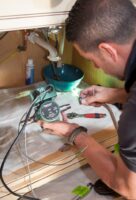
Advancements in technology, sustainability, and accessibility have been driving constant change in various industries, and plumbing is no different. What previously seemed to be a norm, plumbing experts are now substituting it with more efficient and advanced technology, especially in regard to plumbing appliances and fixtures. Let’s look at some trends that are already shaping Read more
Advancements in technology, sustainability, and accessibility have been driving constant change in various industries, and plumbing is no different. What previously seemed to be a norm, plumbing experts are now substituting it with more efficient and advanced technology, especially in regard to plumbing appliances and fixtures. Let’s look at some trends that are already shaping the plumbing industry and what to expect in the future.
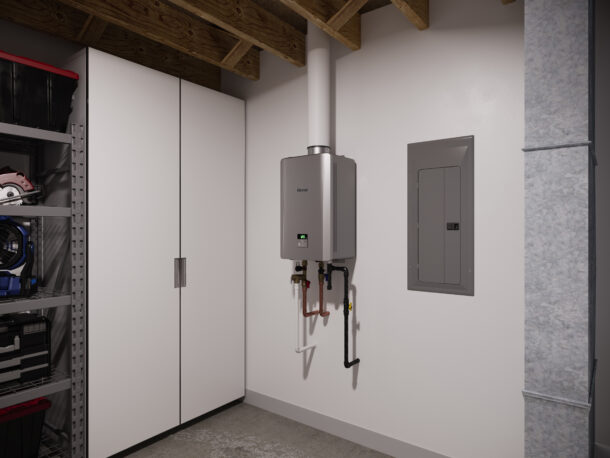
Increase in Online Subcontractor Scheduling
Most reputable plumbing companies like Grable Plumbing Services are catching up with technology by enabling potential clients to request free estimates and schedule consultations effortlessly on a website.
Plumbing experts are increasingly adopting the use of project management software, which enables them to monitor their plumbers’ productivity and performance while reducing downtime. There is also the use of digital apps that enhance effective communication and collaboration in real-time among plumbers, especially when not physically present at the site.
Adoption of Tankless Water Heaters
There is a rising number of commercial and residential property owners installing tankless water heaters. The water heaters only work on demand, enabling you to save a notable amount of money and energy. Besides that, tankless water heaters occupy less space compared to traditional water heaters and feature an extended lifespan than the conventional counterparts.
Use of Better Materials
Manufacturers are now using better materials to develop plumbing pipes and fixtures. PEX piping is a newer plumbing material that continues to gain popularity due to its flexibility, durability, and affordability compared to traditional copper piping.
In addition, PEX piping has the ability to resist corrosion and scale buildup, which mostly happens with copper pipes. It also withstands freezing temperatures and higher pressures, improving its lifespan. If you are a cautious property owner, you can add better insulation to your plumbing pipes to protect them from freezing during winter. It is also a perfect way to maintain hot water temperatures for longer periods.
The Rise in Automation and Sensors
The plumbing landscape is immensely changing, thanks to the increased adoption of smart automation and sensors. This has become more popular in residential homes. For instance, homeowners are installing sensor-activated toilets to enable automatic flushing and faucets that automatically turn on and off.
There are also showerheads capable of tracking your water usage and leak-detecting sensors. All these go a long way in helping you to save water and energy. Currently, you can find automatic toilets and faucets even in commercial applications.
Increased Awareness About Greywater Plumbing
Like many property owners who have become more environmentally conscious, you might be looking for ways to lower your environmental footprint and conserve water. The best way to do this is through setting up a greywater plumbing system.
The average American family consumes more than 300 gallons of water each day at home, with the largest share being consumed by toilets, showers, and faucets. By establishing proper greywater systems, you can recycle greywater from sinks and showers and use it to water plants or flush toilets.
Superior Water Filtration Systems
Filtration systems enable the cleansing of potable water to remove subtle elements like chlorine and magnesium. Many water filtration systems have been using reverse osmosis as a major component of the process.
Ultraviolet light and activated carbon stand out as the future of water filtration. While the former focuses on filtering smaller particles, the latter effectively gets rid of viruses, bacteria, and parasites.
Technology plays a crucial role in what you should expect in plumbing moving forward. Nothing is set in stone, and all these trends will keep changing as new discoveries are made. The best thing to do is to stay informed and keep track of the latest trends to make the best plumbing decisions for your business or home.
